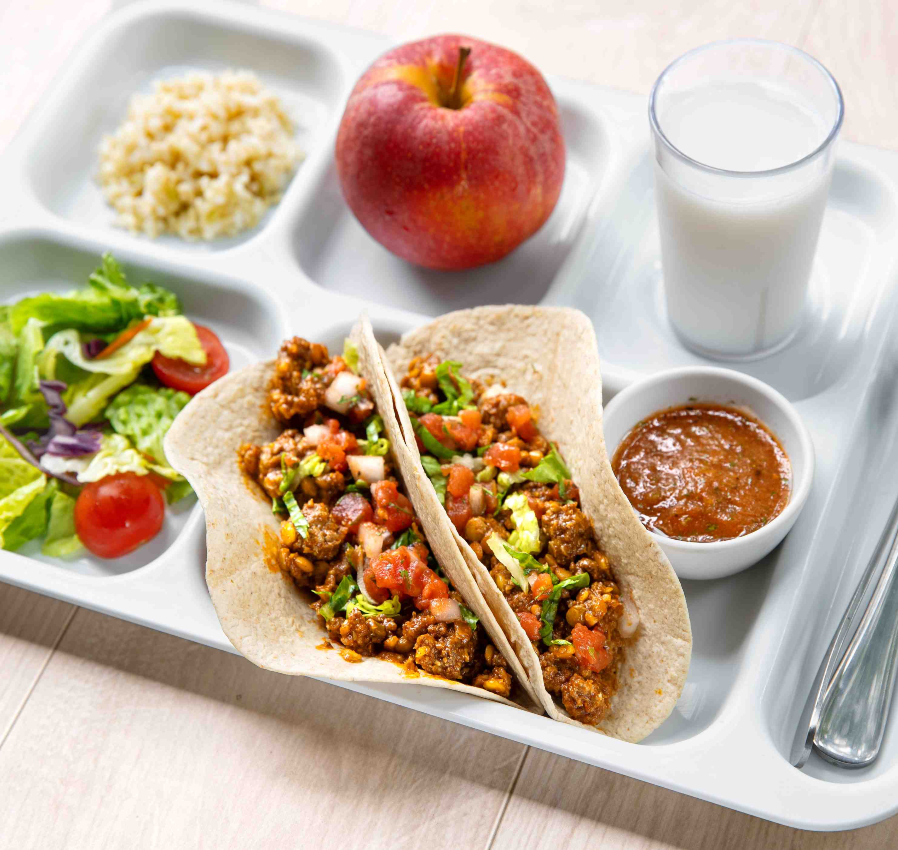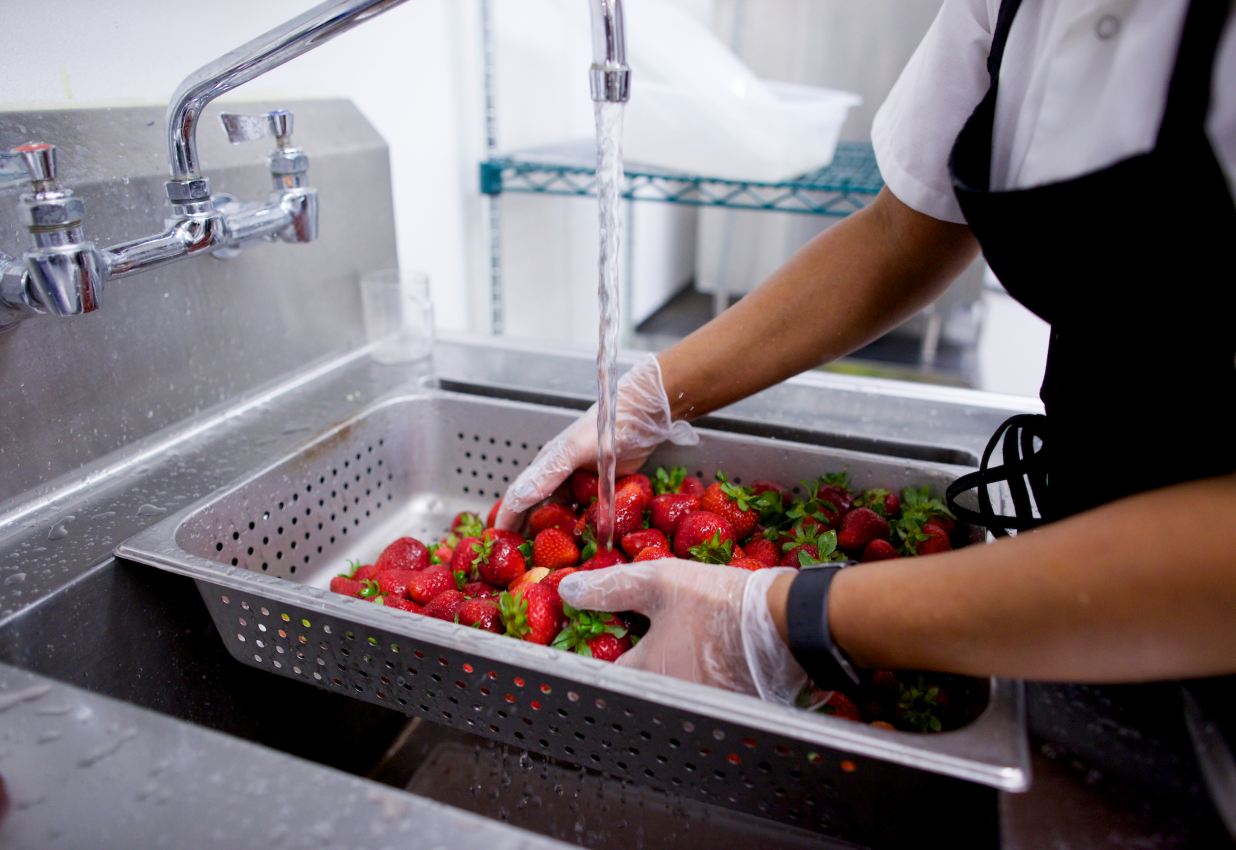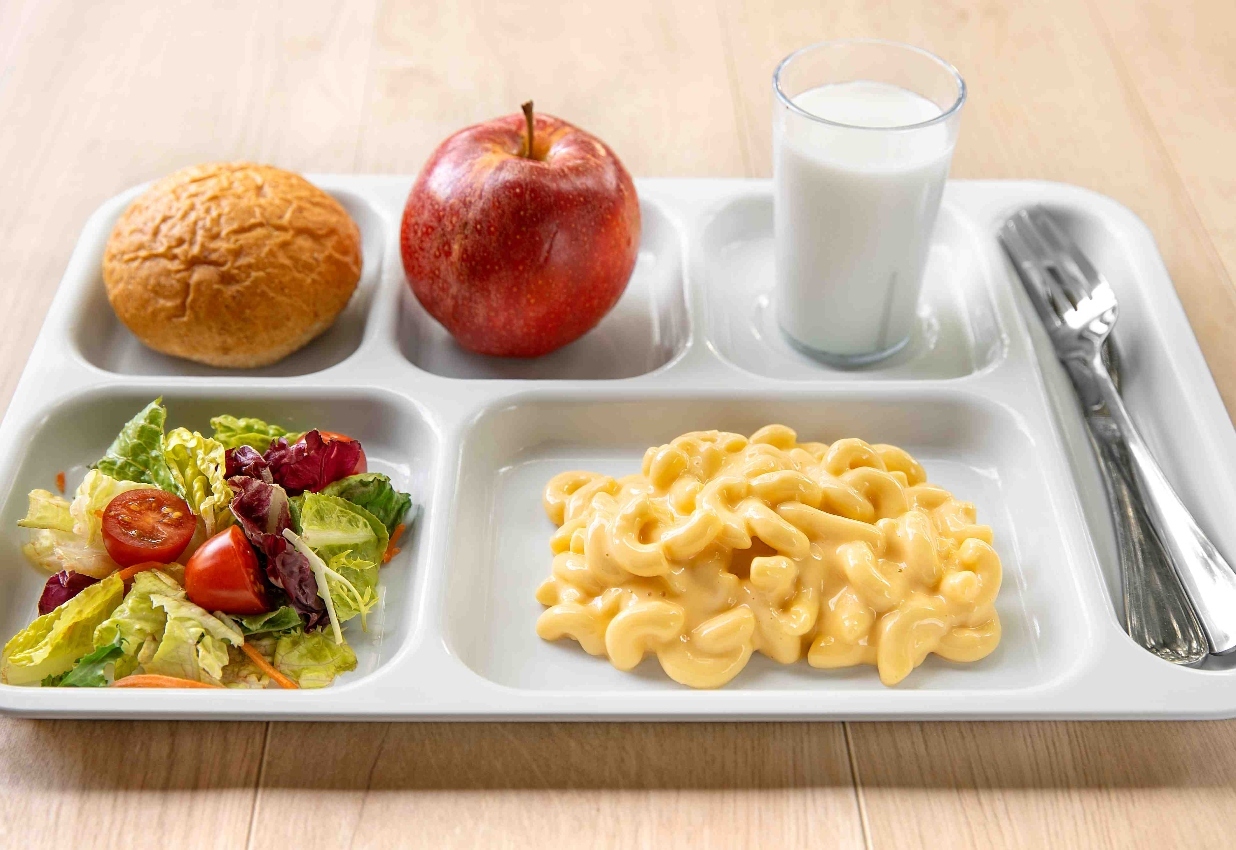
Back to School Tools
August 15, 2023 | By Brandy Dreibelbis
We’re supporting school food professionals nationwide with NEW resources and helpful tools as they gear up for students returning to cafeterias!
New school year, new resources! As kids return to school cafeterias, school food professionals gear up to serve healthy, scratch-cook meals to ensure students are well fed for success. Now more than ever, it’s important that all kids have access to healthy food and more states are passing legislation to make school meals free. Healthy School Meals for All — offering school breakfast and lunch to all students at no charge to families — offers a variety of benefits including everything from ending school food stigma to enhancing learning and academic achievement. According to the Food Research and Action Center, “Healthy School Meals for All will increase the resources available for food and labor, resulting in better, fresher, more appealing food — and thus further increasing participation. As more students participate, more parents and students will have a reason to get involved in efforts to improve menus and meal quality”.
In order to support school food professionals during this busy time, we’ve created NEW Standard Operating Procedures that cover everything from Ordering & Receiving to Safely Working with Fresh/Raw Animal Proteins. Additionally, we’re highlighting three of our top downloaded resources and providing info about our School Food Institute 101 course. Read on to learn more about these helpful back to school tools!
NEW Standard Operating Procedures
New school years bring change. Change in any system produces stress and challenges, and systems that rely on Standard Operating Procedures (SOPs) are better able to weather change because of the clarity and consistency they provide. Whether you’re a small single-school program or a larger district, understanding and implementing SOPs can streamline your processes, enhance performance, and elevate your overall efficiency.
It is best practice to update SOPs annually and for team members to review all SOPs at the beginning of school and again mid-year. Our Service Lines SOP is especially helpful to review as you head back to school so that your staff can set up their cafeteria for success!
Discover more of our SOPs that cover safe food handling, service, sales and inventory on The Lunch Box.
Helpful Back to School Tools
The Five Meal Components Poster
Before we jump into explaining this resource, it’s important to acknowledge that the cafeteria isn’t just a place where kids eat, it’s also a learning environment where you can visually reinforce healthy food messaging through menus, activities, and events. Visual food education in the cafeteria can take on many forms—from posters depicting appropriate portion sizes to signs about salad bar etiquette.
The Five Meal Components Poster is designed to help students understand what they need to take in order to make a complete lunch. By hanging this near your serving line, kids will better understand what makes up a reimbursable meal and a healthy, complete lunch!
You can find additional downloadable posters here.
Meals per Labor Hour Worksheet
This worksheet is a useful tool to outline your labor baseline. Meals per labor hour is the most common form of productivity used in school food programs. Any time your program changes, it is important to review the impact as part of the planning process. While meal per labor hour targets must be specifically designed by and for each district, typically 16-22 is a typical range given the operation. Reorganizing start and exit times, adding an hour or two, and occasionally hiring additional personnel are all options but need to be vetted against current labor assignments and expected workload of the expansion.


Meals per Labor Hour Worksheet
This worksheet is a useful tool to outline your labor baseline. Meals per labor hour is the most common form of productivity used in school food programs. Any time your program changes, it is important to review the impact as part of the planning process. While meal per labor hour targets must be specifically designed by and for each district, typically 16-22 is a typical range given the operation. Reorganizing start and exit times, adding an hour or two, and occasionally hiring additional personnel are all options but need to be vetted against current labor assignments and expected workload of the expansion.
Read about the Meals per Labor Hour Worksheet and download it here!
Meal Count Revenue Tracker
Meal counts determine the amount of revenue that a program will receive to cover the costs of labor and food. Meal counts are the key data set to track in school food programs and should drive the hours of labor needed to produce and serve meals properly and provide the basis for estimating the amount of food that needs to be purchased to support the menu. Complete and accurate monitoring of meal counts is the foundation of the food service program.
The Meal Count and Revenue Tracker tool helps predict revenue by category based on actuals and provides a way to measure program success throughout the year, as well as reveal if there are available funds for larger and discretionary purposes. It’s helpful to review these calculations in preparation for a new school year to ensure the increased revenue is enough to offset the increased expense caused by any changes. If revenue falls short, you will need to review your labor changes.
Check out more Fiscal Management tools here on The Lunch Box!

School Food 101
The School Food Institute (SFI) is an online learning platform that gives school food service professionals and childhood nutrition advocates the in-depth training, operational skills, and strategic vision necessary to make school food fresh, healthy, and sustainable. Our engaging courses give you a front row seat in Chef Ann Cooper’s classroom, where you can learn directly from a leader in school food change on how to transition school meal programs to scratch-cooked operations that provide real, healthy food to kids at school every day.

School Food 101
The School Food Institute (SFI) is an online learning platform that gives school food service professionals and childhood nutrition advocates the in-depth training, operational skills, and strategic vision necessary to make school food fresh, healthy, and sustainable. Our engaging courses give you a front row seat in Chef Ann Cooper’s classroom, where you can learn directly from a leader in school food change on how to transition school meal programs to scratch-cooked operations that provide real, healthy food to kids at school every day.
Looking for a refresh of the basics as you head back to school? Our School Food 101 course provides the overview and context of the operational demands of school food and the urgency of school food change. In this course, you will gain foundational knowledge about school food history, regulations, policy, and funding that will support informed advocacy for healthier food in schools. School Food 101 also counts toward 3 hours of training for USDA professional development standards!
Explore the full SFI course catalog that covers a broad range of school food topics here.
Resources Year-round
Whether you’re looking for SOPs, downloadable posters and worksheets, or online courses, we’ve got you covered! We hope these resources help school food professionals move through this school year with more ease and efficiency so that together, we can feed our nation’s kids healthier, scratch-cooked meals.
Click here to sign up for our operational newsletter, get resources delivered straight to your inbox and stay up to date on school food news year-round!






